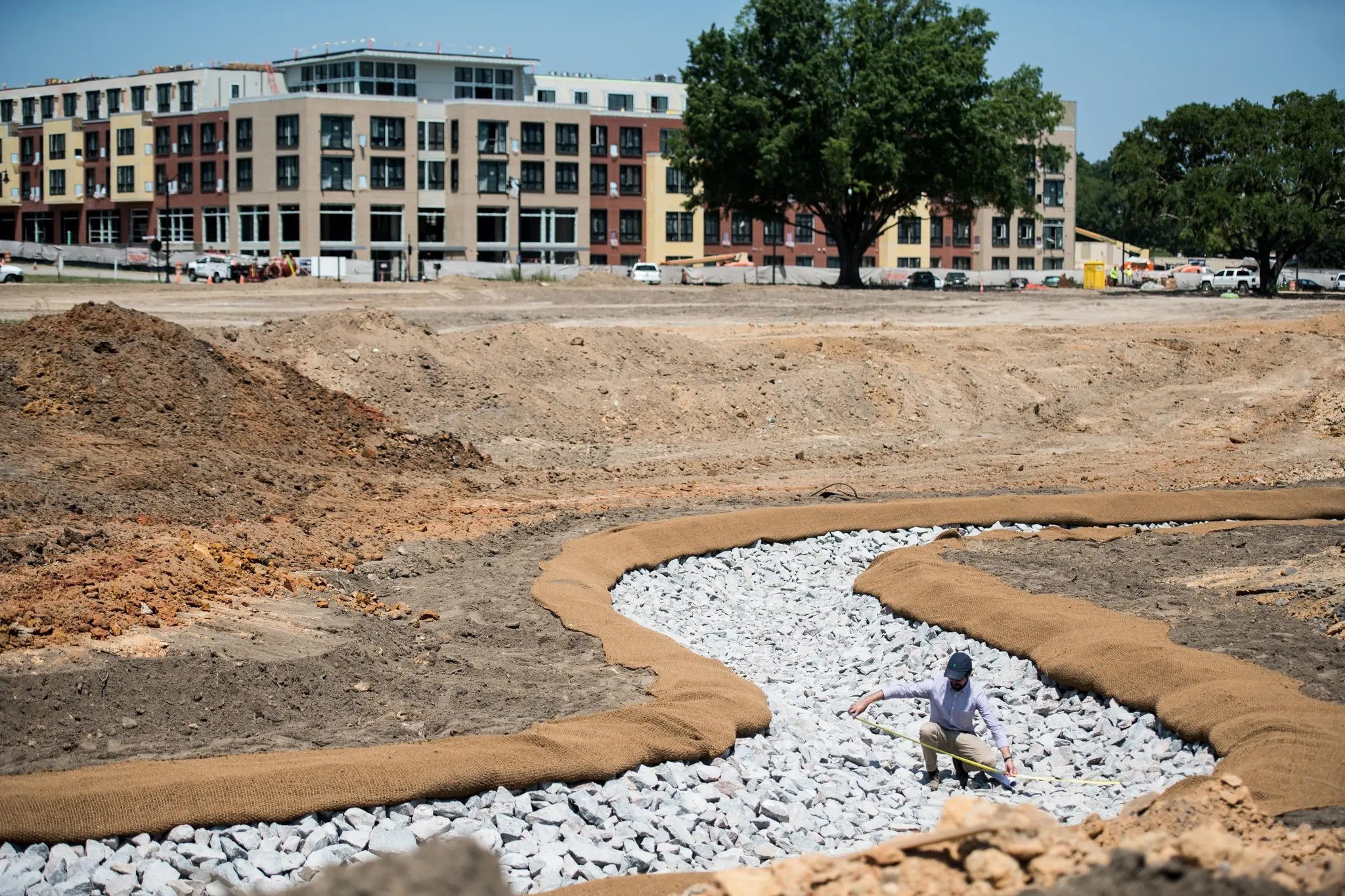From Former Mental Hospital to Recreational Hub
Since 2014, RDE has worked with the Hughes Development Corporation and the City of Columbia, SC to naturalize and “daylight” Smith Branch, a creek that flows through the site of the historic state mental hospital. Quoting from a recent article about the project in the New York Times:
Sean Rayford for The New York Times
The South Carolina Lunatic Asylum admitted its first patient in 1828. Ever since, its impressive brick wards surrounded by nearly 200 acres of leafy lawns and gardens served as landmarks in Columbia, the state’s capital.
Almost 200 years later, and three decades after the last patient was discharged, the old brick buildings and expansive open space are being steadily converted into one of the largest downtown mixed-use real estate projects in the nation, a 181-acre development known as the BullStreet District…
More than $100 million has been invested to construct an inviting downtown destination that Columbia has never had before. BullStreet is steadily emerging as the civic space that Stephen K. Benjamin, the city’s three-term mayor, envisioned when he persuaded the City Council in 2013 to begin collaborating on the project with the Hughes Development Corporation, a developer based 100 miles away in Greenville…
Hughes is also constructing a $4 million, 20-acre park, which features restoring the natural flow of Smith Branch, a tributary of the Broad River that runs through the site. Before Hughes took ownership of the development, the creek flowed for 1,000 feet above ground, and then disappeared for 1,600 more feet into two mammoth underground concrete pipes the state installed in the 1950s to control flooding.
“Joshua Robinson, an engineer and hydrologist from Charleston, designed a restoration plan to clear the first 1,000 feet of debris and rebuild the existing channel. He then constructed 1,600 feet of new channel on the surface, freeing the creek from the pipes. Mr. Robinson did not demolish the old pipes, though. He left them in place and built a concrete weir, a compact dam structure that during storms diverts high flows into the pipes and protects the park from floods.
“The stream is the spine of the park,” said Mr. Robinson, who expects to open the park later this year. Upstream will be the most naturalistic part of the park with native vegetation. Downstream will have manicured fields and walking paths, a two-acre pond, pools and shade trees. “It will be a diverse experience, feel natural, and all in human scale,” he said.

